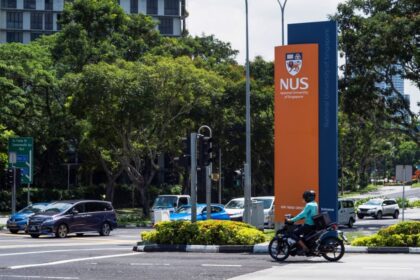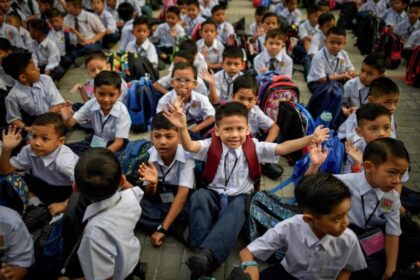The Hidden Crisis: Why Baby Boxes Exist in South Korea
In the heart of Seoul, a small, unassuming hatch built into the wall of Jusarang Community Church has become a symbol of both hope and heartbreak. Known as a “baby box,” this device allows mothers in crisis to anonymously and safely surrender their newborns. Since its installation in 2009, the baby box has received over 2,000 infants, many left by mothers who felt they had no other choice. The stories behind these anonymous drop-offs reveal a complex web of social stigma, legal barriers, and desperate circumstances that continue to drive child abandonment in South Korea.
- The Hidden Crisis: Why Baby Boxes Exist in South Korea
- How Baby Boxes Work: A System Born of Desperation
- The Social Stigma of Single Motherhood
- Legal Changes and Unintended Consequences
- Controversy: Do Baby Boxes Save Lives or Encourage Abandonment?
- The Fate of Abandoned Babies: Orphanages, Adoption, and the Welfare System
- Ghost Babies and the Push for Reform
- International Comparisons: Safe Haven Laws and Global Perspectives
- Personal Stories: Letters, Loss, and the Hope for Change
- In Summary
While the concept of baby boxes is not unique to Korea—similar systems exist in countries like Germany, Japan, and the United States—the Korean experience is shaped by deep-rooted cultural attitudes toward single motherhood, evolving adoption laws, and a society grappling with the lowest birth rate in the world. This article explores the origins, controversies, and consequences of baby boxes in South Korea, drawing on firsthand accounts, expert analysis, and the voices of those on the front lines.
How Baby Boxes Work: A System Born of Desperation
The baby box at Jusarang Community Church is more than just a hatch in a wall. It is a temperature-controlled chamber equipped with a sensor and alarm. When a baby is placed inside, staff are alerted immediately. The infant is brought inside, given medical attention, and, when possible, the mother is offered counseling and support. The goal, according to Hwang Min-sook, director of Babybox Korea, is not simply to take in abandoned babies, but to encourage mothers to keep and raise their children if at all possible.
Most mothers who use the baby box are unmarried and in their teens or twenties. Many give birth in secret, sometimes in unsafe conditions such as abandoned buildings or public restrooms, to avoid the shame and repercussions of being an unwed mother. The baby box offers a last resort—a way to ensure their child’s survival when all other options seem closed.
Since its inception, the baby box has inspired the creation of a second facility in Gunpo, Gyeonggi Province. Staff at these centers provide care for up to six months, after which local authorities determine the child’s future—whether that be adoption, foster care, or, in some cases, reunification with the birth mother.
The Social Stigma of Single Motherhood
At the heart of the baby box phenomenon lies a powerful and persistent social stigma against single mothers. In South Korea’s Confucian-influenced society, family lineage and legitimacy remain deeply important. Having a child outside of marriage is often seen as a source of shame, not just for the mother but for her entire family. This stigma is so severe that many women hide their pregnancies, give birth alone, and avoid registering their children to protect their own and their family’s reputation.
Employment and marriage prospects can be severely damaged if a woman is known to have had a child out of wedlock. Family registry documents, which are accessible to employers and potential spouses, can reveal this information, leading to lifelong consequences. As a result, some mothers feel compelled to abandon their babies anonymously, believing it is the only way to give their child a chance at a better life.
Hwang Min-sook, director of Babybox Korea, explains:
“There are many who give birth alone and abandon their babies. The baby box is their last refuge.”
Despite government efforts to provide shelters and support for single mothers, many women remain unaware of these resources or fear the social repercussions of seeking help. The result is a cycle of isolation, secrecy, and, too often, abandonment.
Legal Changes and Unintended Consequences
The landscape of child abandonment in South Korea has been shaped by a series of legal reforms, some of which have had unintended and sometimes tragic consequences. In 2012, the Special Adoption Law was amended to require that all adoptions be court-approved and that parents register their newborns before relinquishing them. The intention was to make adoption more transparent and to protect the rights of adoptees, many of whom had been sent overseas with little or no information about their origins.
However, the new law also made it much harder for mothers to give up their babies anonymously. Fearing exposure and lifelong stigma, some women began abandoning their infants in public places or turning to the baby box as a last resort. The number of babies left at the baby box surged in the years following the law’s enactment.
In response to growing concerns about unregistered “ghost babies”—infants born but never officially recorded—the government introduced further reforms. In 2024, an anonymous birth system was implemented, allowing women to give birth in hospitals without revealing their identity. This was intended to reduce unsafe, out-of-hospital births and prevent infanticide. Yet, even with these changes, the underlying stigma remains, and dozens of babies continue to be surrendered each year.
Controversy: Do Baby Boxes Save Lives or Encourage Abandonment?
The existence of baby boxes is fiercely debated in South Korea and beyond. Supporters argue that they save lives by providing a safe alternative to dangerous abandonment or infanticide. Pastor Lee Jong-rak, who founded the first baby box, has adopted several disabled children himself and insists that the box is a “life-box”—a place where babies are given a second chance.
Critics, including some child welfare advocates and the United Nations Committee on the Rights of the Child, argue that baby boxes violate a child’s right to know their origins and may encourage abandonment by making it too easy for parents to relinquish their children. They point out that children left in baby boxes are often unregistered, complicating their prospects for adoption and access to social services.
There are also concerns about the long-term fate of these children. Many end up in orphanages, where they may face institutionalization, lack of stable caregivers, and social stigma as orphans. Domestic adoption rates remain low, and international adoption has become more difficult due to stricter regulations and a desire to keep Korean children within the country.
Pastor Lee counters these criticisms by emphasizing the desperation of the mothers who use the baby box:
“There are no parents who give birth (with the intention) to abandon their babies. You have come this far because you want your baby to live. You haven’t abandoned them. You’ve saved them.”
The Fate of Abandoned Babies: Orphanages, Adoption, and the Welfare System
Once a baby is surrendered to the baby box, their journey is far from over. Staff provide immediate care and report the child to authorities. If the mother cannot be persuaded to reclaim her child, the baby is placed in temporary custody while the government determines their future. According to records, of the more than 2,000 babies surrendered since 2009, the majority have been sent to child care centers, a smaller number have been adopted, and some have been reunited with their mothers.
However, the path to adoption is fraught with obstacles. Many prospective adoptive parents are reluctant to take in children with unknown medical histories or those who are unregistered. Domestic adoption remains rare, accounting for only a small fraction of cases. As a result, many children spend their formative years in orphanages, where they may struggle to form stable attachments and face significant challenges upon aging out of the system at 18.
Julie Duvall, an adult Korean orphan and advocate, describes the difficulties faced by these children:
“With no blood line to trace, orphans are at the lowest caste of Korean society and treated as a ‘nonperson.’ My kids, they are loved and cared for. But at the same time, they wonder, ‘Why am I not with my parents?’ So some kids feel very miserable… They just blame themselves… So I’m trying to make them confident and feel that it’s not their fault.”
Ghost Babies and the Push for Reform
The issue of unregistered or “ghost babies” has become a national scandal in recent years. Investigations revealed that between 2015 and 2022, over 2,000 infants born in hospitals were never registered with the government. Some of these children were later found dead, victims of neglect or infanticide. The government responded by passing new laws requiring hospitals to report all births directly to local authorities, aiming to close the administrative loophole that allowed these children to slip through the cracks.
Yet, experts warn that legal reforms alone are not enough. The root causes—poverty, lack of support for single mothers, and pervasive social stigma—must be addressed to prevent abandonment and protect vulnerable children. Facilities like Aeranwon in Seoul offer long-term support for single mothers, including counseling, childcare, and vocational training, but awareness of such resources remains limited.
Professor Kang Eunhwa of Mejiro University notes:
“Because of patriarchal family norms, unwed single mothers are severely looked down upon in Korean society. Moreover, not only do they not want others to know, but women who are economically disadvantaged, socially disadvantaged, or lack information don’t know how to find the necessary resources. Isolation occurs when there’s this information deficit, or they are unable to raise a child in their circumstances.”
International Comparisons: Safe Haven Laws and Global Perspectives
South Korea is not alone in grappling with the challenges of child abandonment. Many countries have implemented “safe haven” laws, allowing parents to relinquish infants anonymously at designated locations such as hospitals or fire stations without fear of prosecution. In the United States, these laws have saved thousands of babies since their introduction in 1999.
However, South Korea’s approach remains unique in its reliance on private, donation-funded baby boxes and the absence of comprehensive legal protections for parents who surrender their children. Calls for the introduction of safe haven laws and greater government support for single mothers have grown louder in recent years, but progress has been slow.
International attention, including documentaries and films like “Broker,” has helped raise awareness of the issue and challenge negative perceptions of mothers who use baby boxes. As director Hirokazu Koreeda observed, the focus should not be on blaming mothers, but on questioning where responsibility truly lies—in society, in government, and in the systems that fail to support vulnerable families.
Personal Stories: Letters, Loss, and the Hope for Change
Behind every baby left in a box is a story of loss, love, and impossible choices. Many mothers leave letters with their babies, expressing sorrow and hope for their child’s future. One such letter reads:
“My baby! Mom is so sorry. I am so sorry to make this decision. My son! I hope you to meet great parents, and I am very, very sorry. I don’t deserve to say a word. Sorry, sorry, and I love you my son. Mom loves you more than anything else. I leave you here because I don’t know who your father is. I used to think about something bad, but I guess this box is safer for you. That’s why I decided to leave you here. My son, Please forgive me.”
Staff at baby box facilities often witness the emotional toll on mothers. Hwang Min-sook recalls:
“When mothers talk to our counselors about entrusting their babies to us, they cry their eyes out. When adoption is decided, they write letters to their babies. Many wrote, ‘I wanted to raise you, but I’m sorry. I was happy for a few days because of you.'”
These stories underscore the need for compassion, understanding, and systemic change. As South Korea continues to confront its demographic challenges and evolving social norms, the fate of its most vulnerable citizens hangs in the balance.
In Summary
- Baby boxes in South Korea provide a safe, anonymous way for mothers in crisis to surrender their newborns, saving lives but also sparking controversy.
- Social stigma against single motherhood, legal barriers, and lack of support drive many women to abandon their babies or avoid registering them.
- Legal reforms intended to protect children and regulate adoption have sometimes had unintended consequences, increasing anonymous abandonment.
- Most babies surrendered to baby boxes end up in orphanages, with few being adopted domestically due to cultural attitudes and lack of information.
- The issue of unregistered “ghost babies” has prompted new laws requiring hospitals to report all births, but deeper social change is needed.
- International comparisons highlight the need for safe haven laws and greater support for single mothers to prevent abandonment and infanticide.
- Personal stories reveal the emotional pain and difficult choices faced by mothers, emphasizing the need for compassion and systemic reform.












